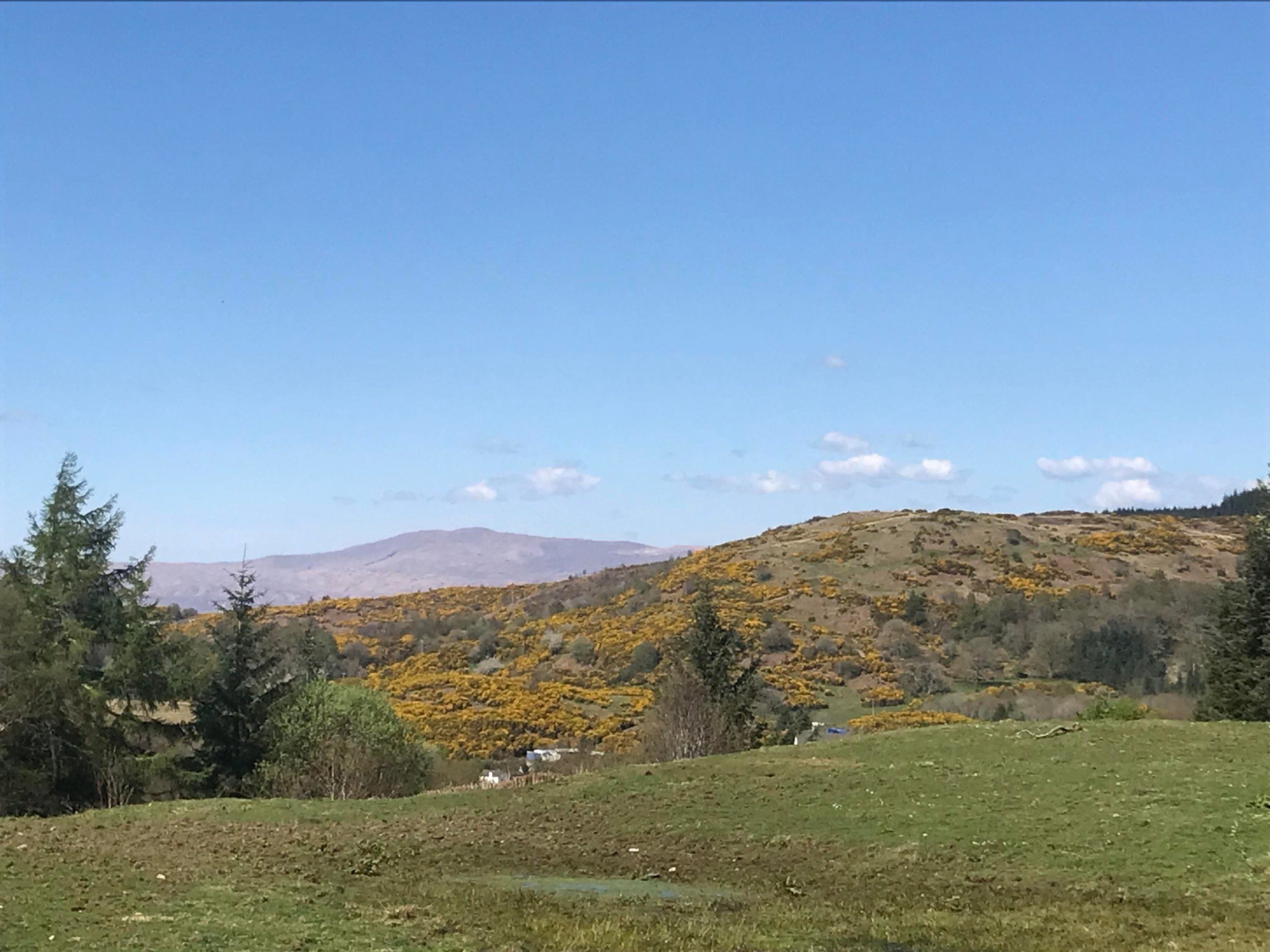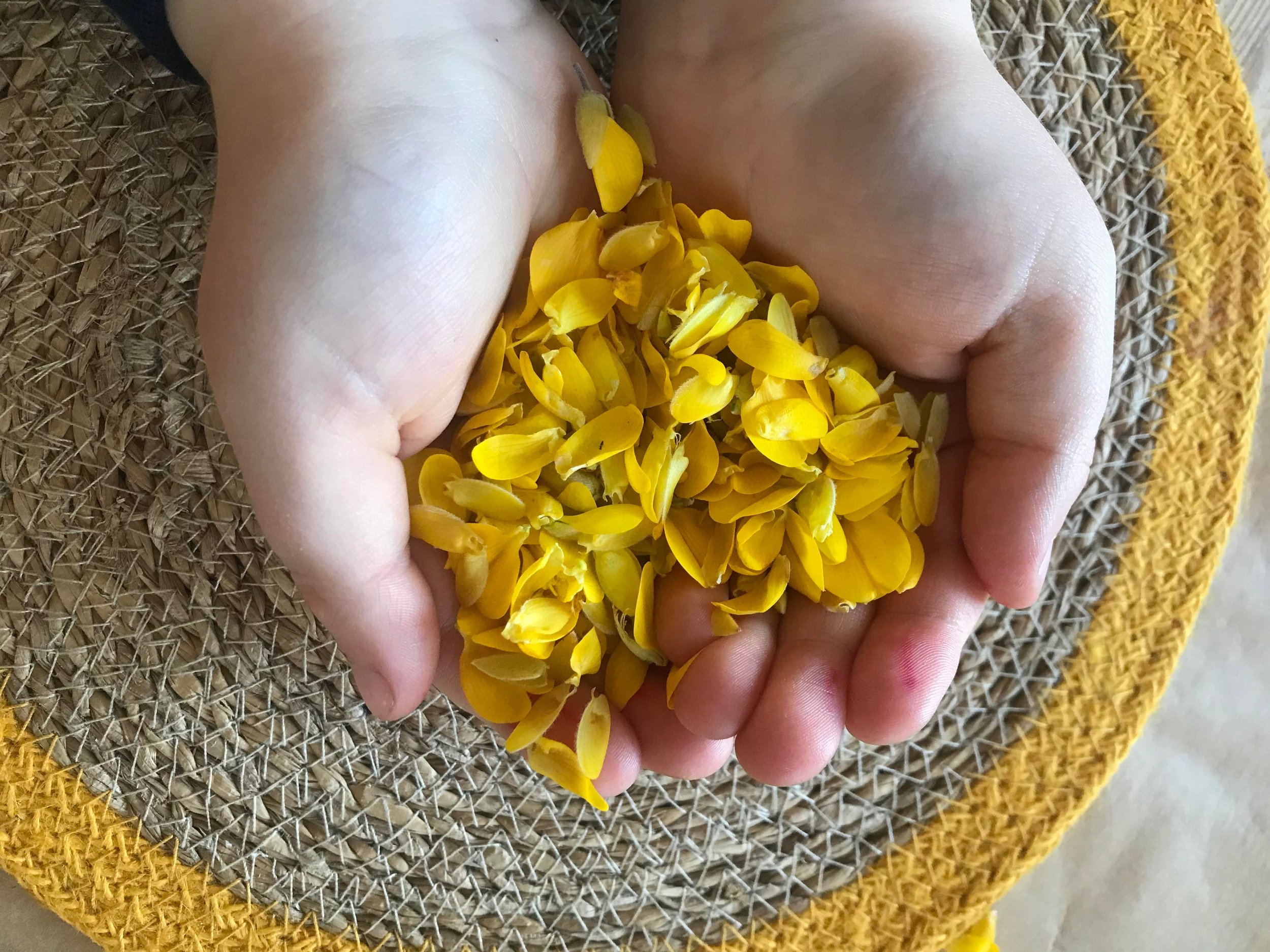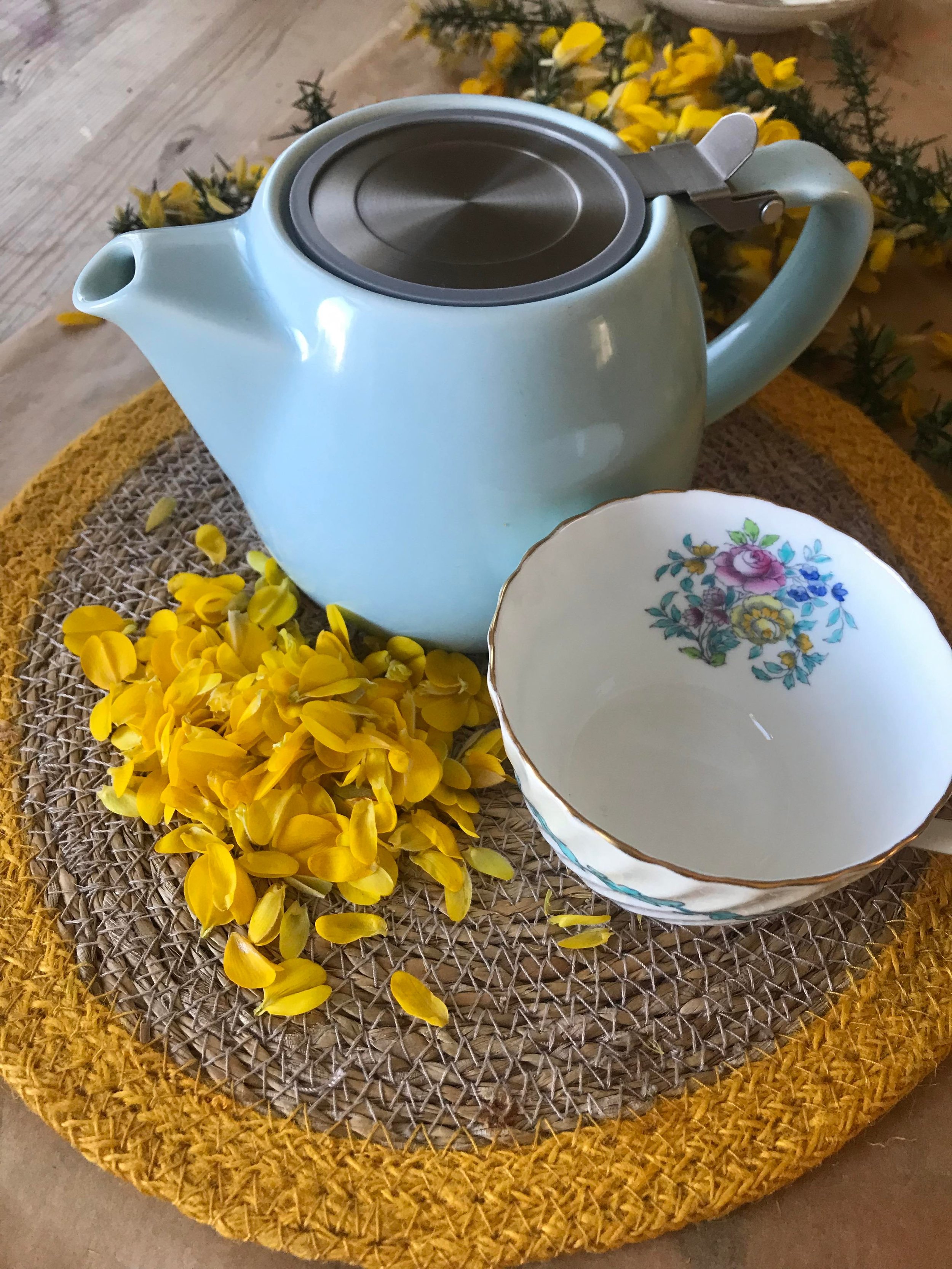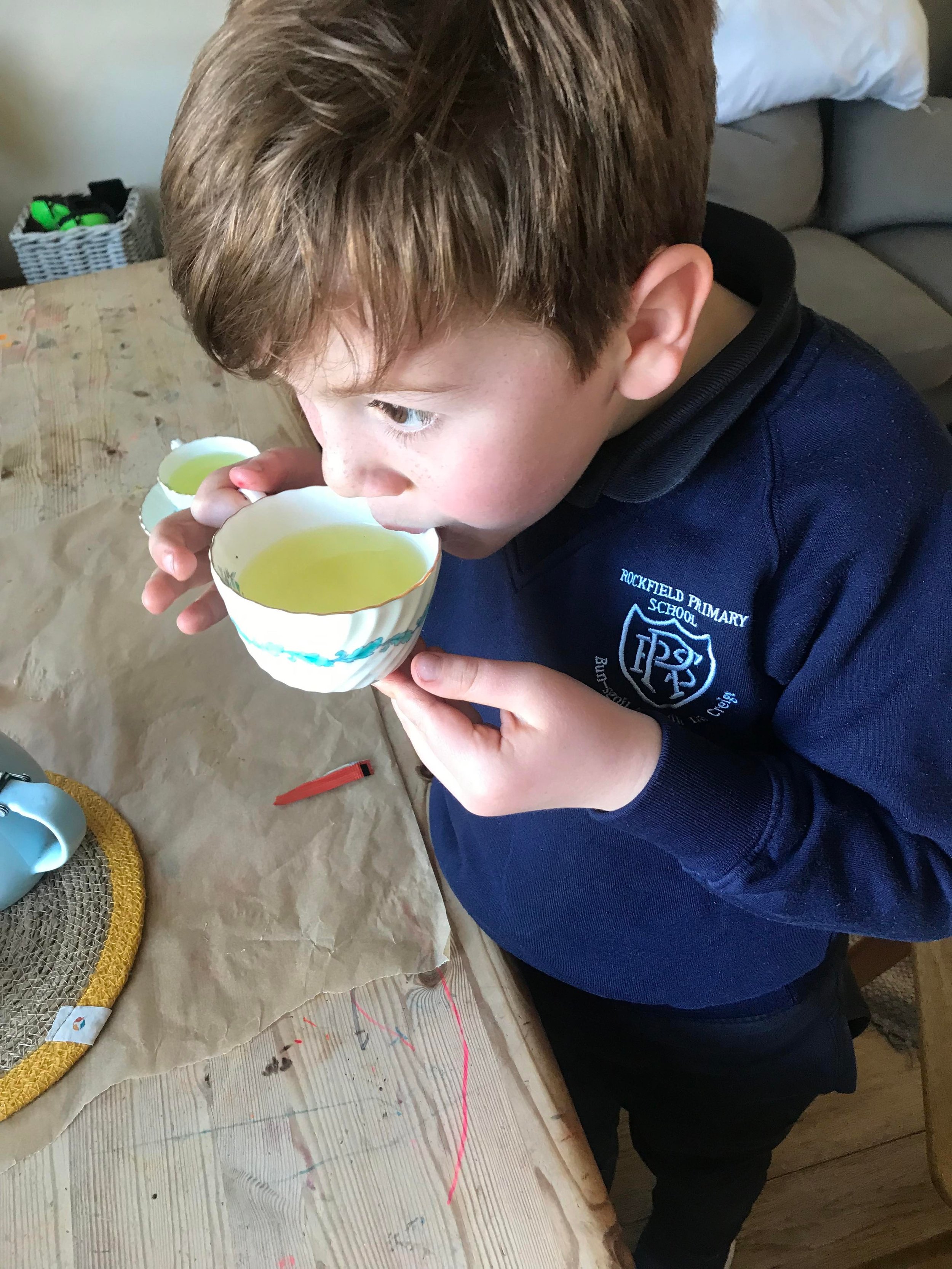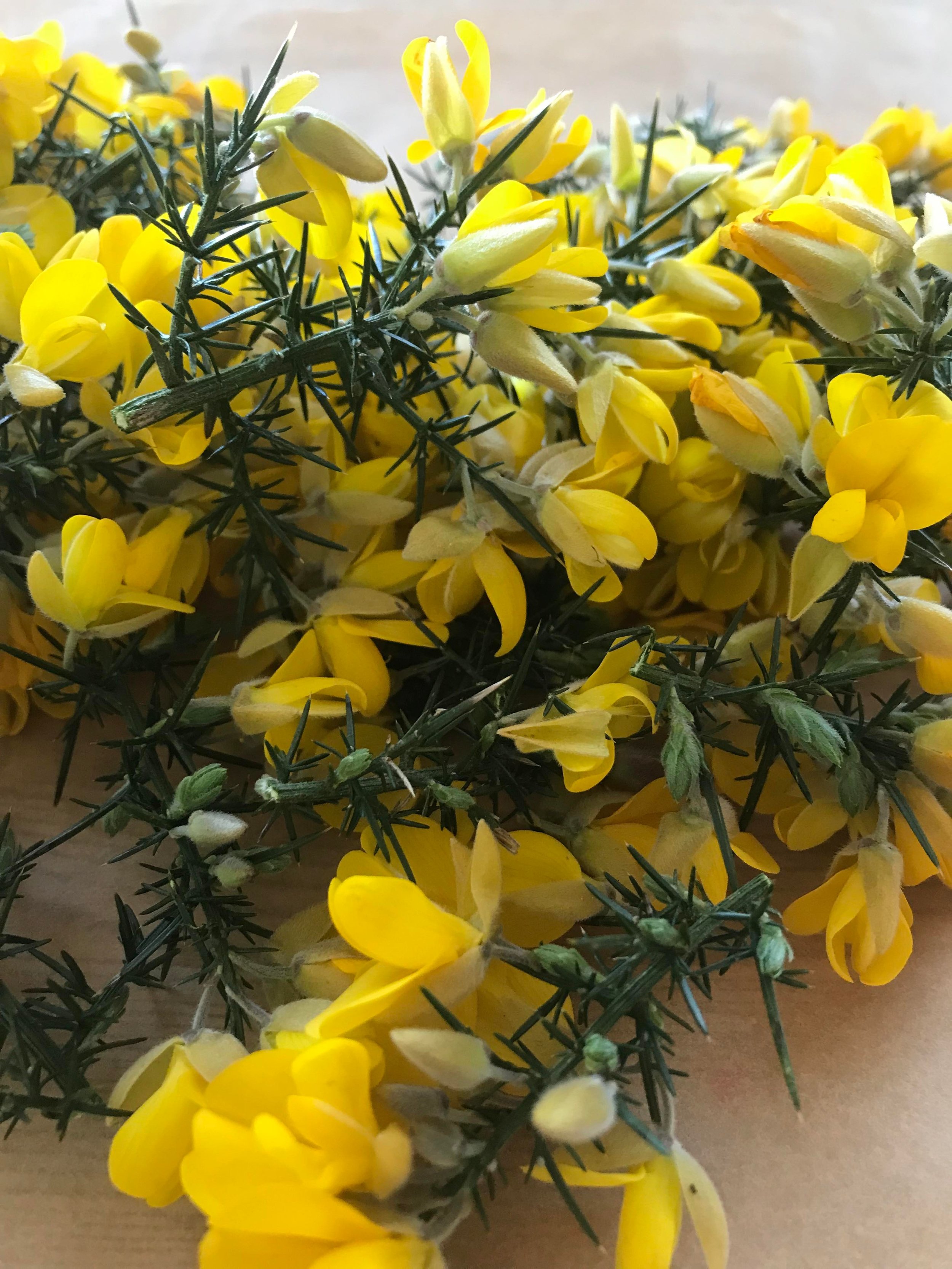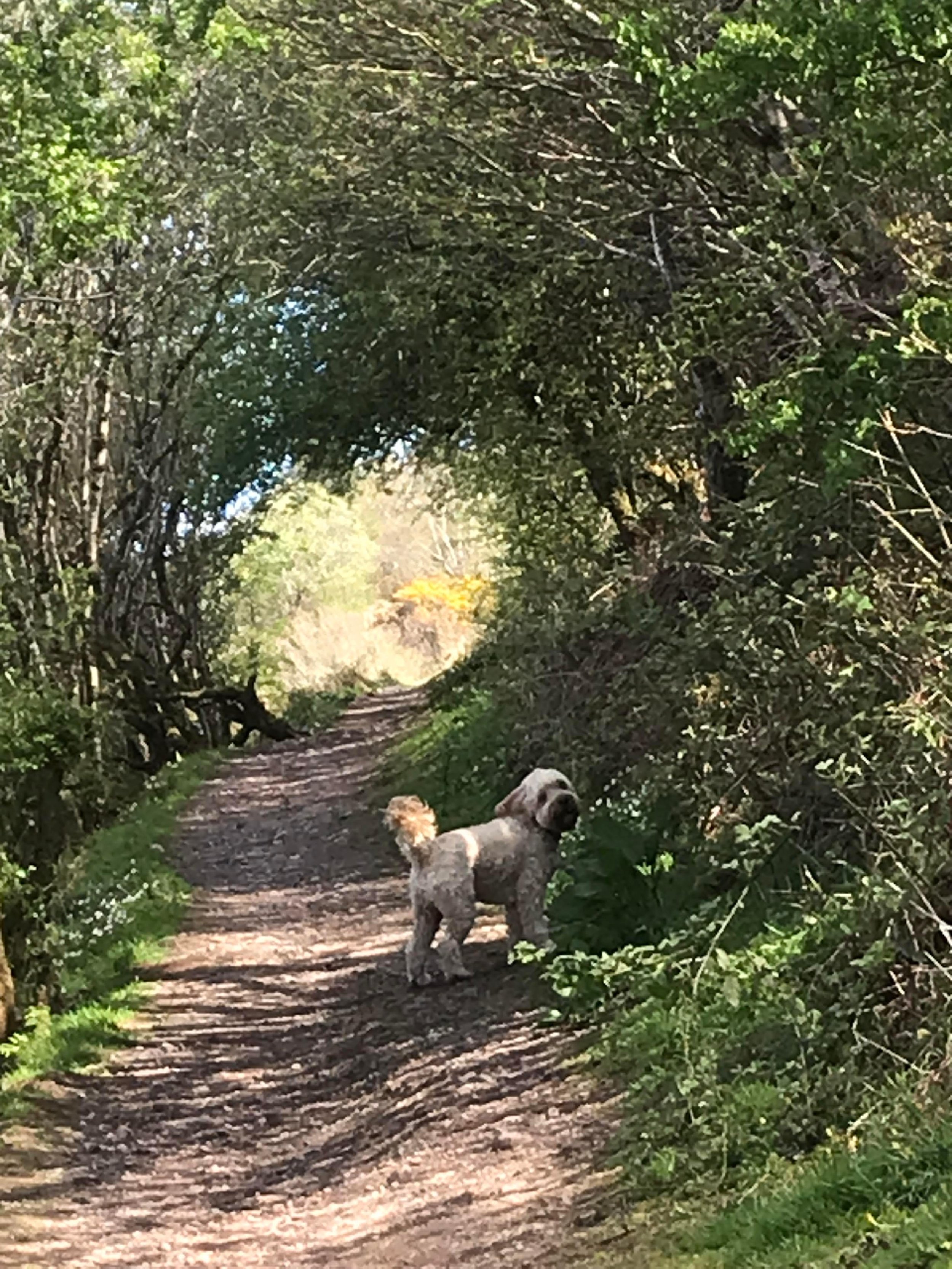Ailsa
I think of my grandparents often when I walk this hill up Glencruitten. My seanair would take us sometimes as kids. My dad (himself a seanair now) likes to tell my children stories of him and his brothers playing wildly in these woods, but it wasn’t until recently that I found out that my granny would retreat to the hill sometimes when she got the chance to get away from her children climbing the walls at home! It made me well up, and now I feel so connected to this place. To think that I’m so often doing the very same thing as her all these years later is just so special to me.
With this in mind, I knew I wanted to investigate something on the hill for this project. The time of year means that there were lots of wee yellow beauties popping up under foot, the daffodils came and went, the dandelions will hang on till they fade to grey, the primroses and their delicate lemon petals will dwindle - but as the saying apparently goes, “when gorse is out of bloom kissing is out of fashion”.
We walk past it every day, ignoring it and yet it holds such beauty - it’s a sensory explosion! The total juxtaposition of its tropical coconut scent on a harsh Scottish hillside is quite amazing, the pop of its seeds in the hot sun, its spiky prickles terrifying us as children almost as much as the sudden death we all expected if we so much as looked at a fox glove the wrong way. It’s out there, loud and proud, as bright as can be - and yet it rarely gets a mention.
“It is clear that gorse and its relatives were widely used and often deliberately cultivated until very recently. Now however, the furze fields and the gorse commons lie neglected and abandoned, a forgotten artefact of our cultural history. As the plants degenerate through age and a lack of management, natural capacity for regeneration declines.” Ian D. Rotherham, Sheffield Hallam University.
An allegory perhaps for some of our conversation around our Gaelic cultural identity.
Gorse was used prolifically for food, for dyes, for shelter, for protection, its ashes used for washing, its petals made soap, its thorny branches used to dry clothes. As its popularity dwindled we have forgotten its gifts, maybe even more pertinently that it was used as the very shrub to establish many of our woodlands.
The gorse my grandmother walked by still stands and so does our culture; it might be a bit spiky, it might seem hard to get to, we may even feel guilty for neglecting it all this time, but it’s there and its presence is felt perhaps more than we realise.
For my contribution myself and my seven year old took to the hill to explore the gorse, we sniffed it and picked it, made tea with it (in my Granny’s special cups) it tastes disgusting but we still think it’s the bonniest thing on the hillside!
[Words and pictures by Ailsa MacEachen.]
Finally, I wanted to look into whether or not gorse was a useful medicinal herb. Turns out it’s absolutely not, but, fittingly, I found out that it is described by Bach as:
‘a remedy for hopelessness - the remedy for people who have given up belief and hope. Gorse represents a stronger kind of downheartedness than the Gentian state, because Gorse people wilfully refuse to be encouraged, so certain are they that their case is hopeless. This demonstrates that the main problem with Gorse people is a loss of faith: if we can be persuaded to see things in a different light there is usually a way forward. This is what the Gorse remedy helps to achieve’.
We don’t need not feel hopeless about our culture, or scared; it is flourishing again.
It always has done, just like the gorse.
Yonder came smell of the gorse, so nutty,
Gold-like and warm; it’s the prime of May.
Better than mortar, brick and putty,
Is God’s house on a blowing day.
- George Meredith, Juggling Jerry (1885)
